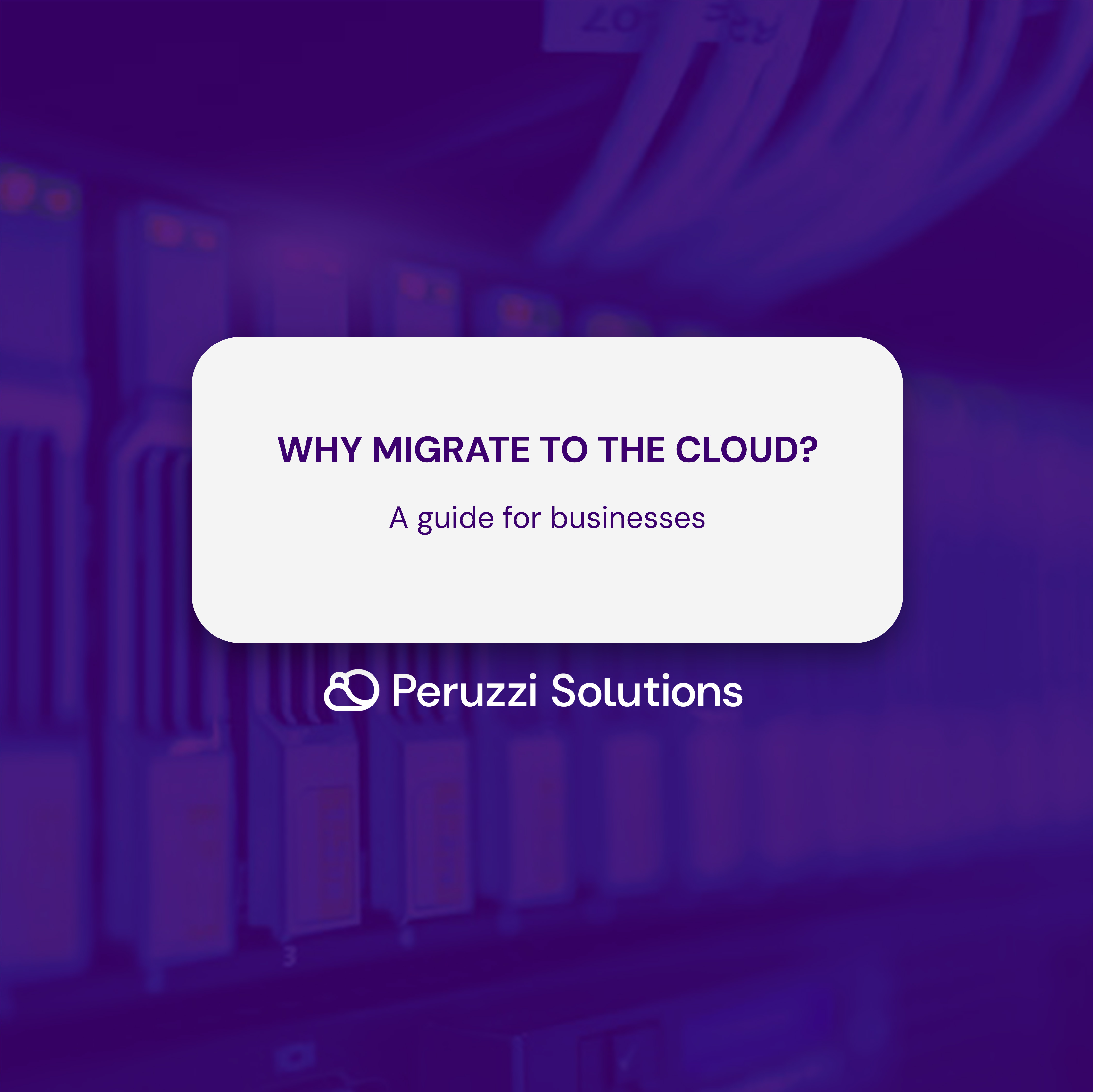In today’s fast-paced digital world, businesses must adapt to evolving technology to stay competitive. One of the most significant shifts in recent years has been the move to cloud computing. Cloud migration enables companies to streamline operations, reduce costs, and enhance security while increasing efficiency and scalability. But why should businesses migrate to the cloud, and how can they ensure a seamless transition? This step-by-step guide explores the key benefits of cloud migration and provides insights into how businesses can make the move effectively.
What is cloud migration?
Cloud migration is the process of moving digital assets, applications, data, and IT infrastructure from on-premises servers to cloud-based environments. We all remember those huge server rooms in every office building where it was too cold to stay for long - to ensure the servers don’t overheat. This transition can involve different cloud models, including:
1. Public Cloud
AWS, Microsoft Azure, Google Cloud) - Hosted by third-party providers and shared across multiple businesses.
2. Private Cloud
A dedicated cloud infrastructure exclusive to one organisation.
3. Hybrid Cloud
A combination of both public and private cloud solutions.
Top Reasons to migrate to the cloud
1. Cost efficiency
One of the most compelling reasons for cloud migration is cost savings. Traditional on-premises infrastructure requires substantial investments in hardware, maintenance, and IT staff. The cloud eliminates these expenses by offering pay-as-you-go pricing models, ensuring businesses only pay for what they use.
2. Scalability & flexibility
Cloud computing enables businesses to scale resources up or down based on demand. Whether handling seasonal spikes in website traffic or expanding to new markets, the cloud offers unmatched flexibility compared to traditional IT infrastructure.
3. Enhanced security
Having on-premises servers raises many security issues, because if one server is down, the whole company can shut down for hours. Leading cloud providers invest heavily in cybersecurity, offering encryption, multi-factor authentication, and compliance certifications to protect sensitive data. Disaster recovery and backup solutions also ensure that data remains safe in case of an emergency.
4. Improved collaboration & remote work
With cloud-based applications, employees can access files and applications from anywhere, ensuring seamless remote work. Cloud collaboration tools like Microsoft 365, Google Workspace, and Slack empower teams to work efficiently, no matter their location.
5. Automatic updates & maintenance
Unlike on-premises infrastructure, which requires regular manual updates, cloud services automatically update software, security patches, and system upgrades, reducing IT workload and improving security.
6. Business continuity & disaster recovery
Cloud platforms offer redundancy and backup options, ensuring that data is never lost. In case of a cyberattack, natural disaster, or system failure, businesses can recover operations quickly without significant downtime.
7. Increased performance & speed
Cloud-based systems leverage high-speed global networks and optimized server performance, reducing latency and improving application speed. This results in better customer experiences and improved productivity.
How to migrate to the cloud successfully
Migrating to the cloud requires careful planning to minimize risks and ensure a smooth transition. Here’s a step-by-step guide:
Step 1: Assess your business needs
Evaluate your current IT infrastructure, applications, and workloads. Identify what needs to be migrated and choose the right cloud model (public, private, or hybrid).
Step 2: Choose a cloud provider
Select a cloud service provider that meets your business requirements. The top providers include:
-
Microsoft Azure
Best for businesses using Microsoft products. Azure provides flexible pricing, reserved instances, and tools like Azure Cost Management to control expenses and optimise resources.
-
Amazon Web Services (AWS)
Amazon’s cloud on-demand cloud computing platform with extensive features.
-
Google Cloud Platform (GCP)
Great for AI and analytics-driven businesses.
Step 3: Develop a migration strategy
Decide on a migration approach:
-
Rehosting (lift and shift)
Moving applications without modification.
-
Refactoring
Making minor changes to optimize for the cloud.
-
Rebuilding
Completely redesigning applications for the cloud.
Step 4: Ensure security & compliance
Review security policies and ensure compliance with industry regulations such as GDPR, HIPAA, and ISO certifications. Azure offers built-in zero-trust security, identity management (Azure AD), and compliance certifications like GDPR, HIPAA, and ISO 27001.
Step 5: Execute & monitor the migration
Perform a pilot migration to test performance before full deployment. Use cloud monitoring tools to track performance, security, and cost-efficiency post-migration.
Challenges of cloud migration: How to overcome them?
1. Downtime & disruptions
Plan migrations during off-peak hours and conduct extensive testing.
2. Security risks
Implement strong authentication measures and encryption.
3. Cost management
Monitor usage and optimise cloud costs using automation tools.
Conclusion
Migrating to the cloud is no longer a question of “if” but a “when”. Businesses that shift to cloud computing benefit from cost savings, scalability, security, and increased efficiency. However, a well-planned migration strategy is crucial for a seamless transition. By choosing the right cloud provider and approach, businesses can future-proof their operations and drive innovation in the digital era.
